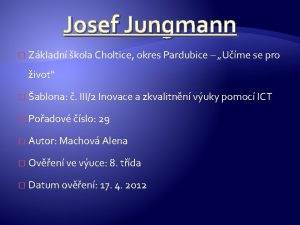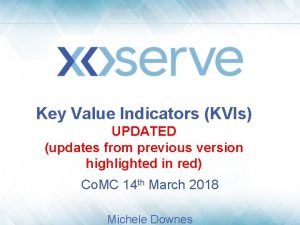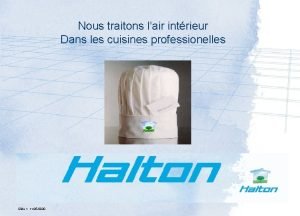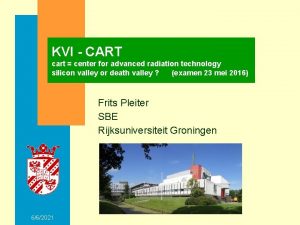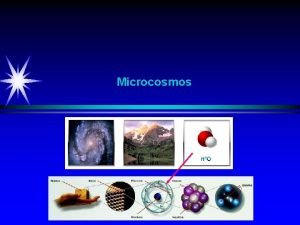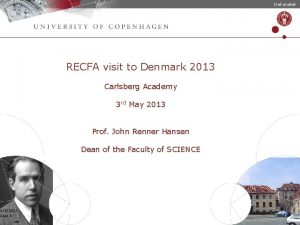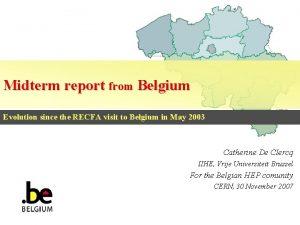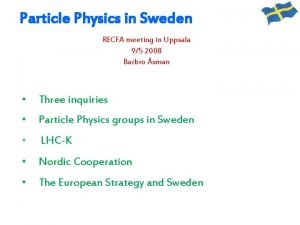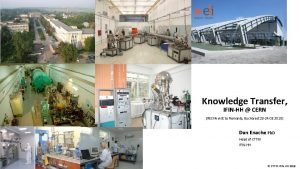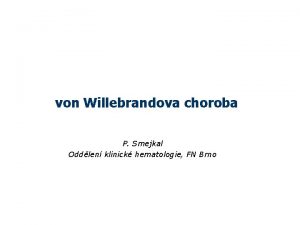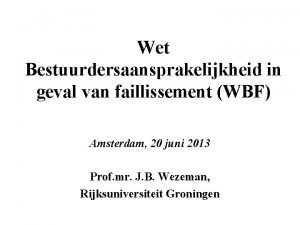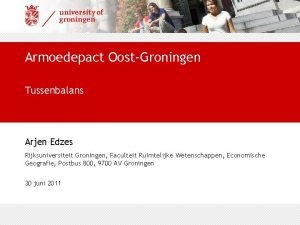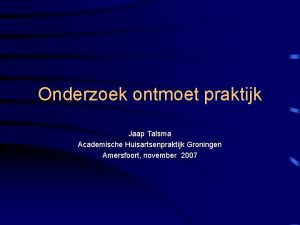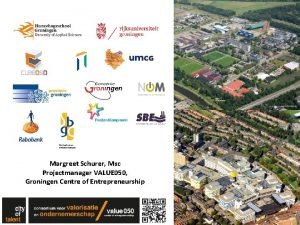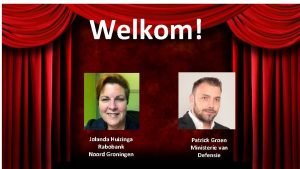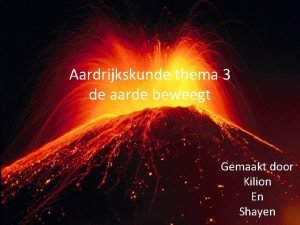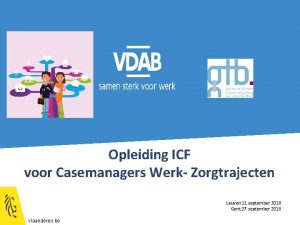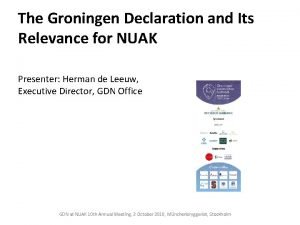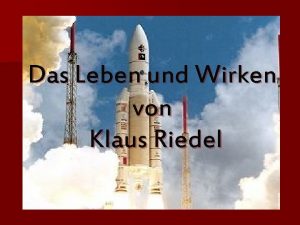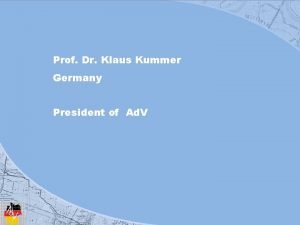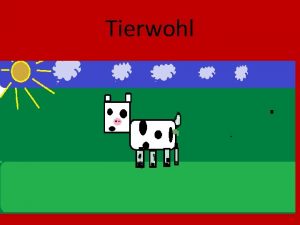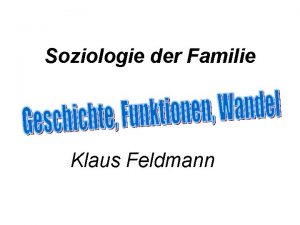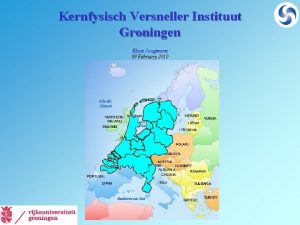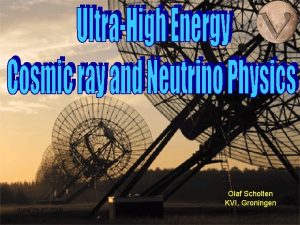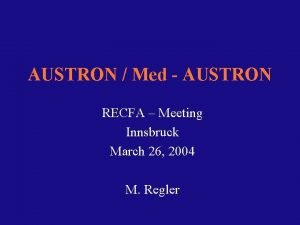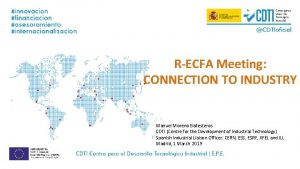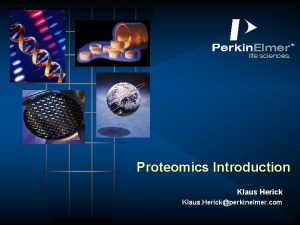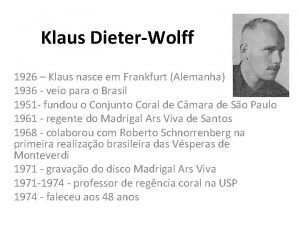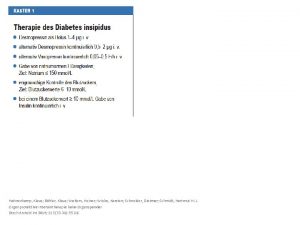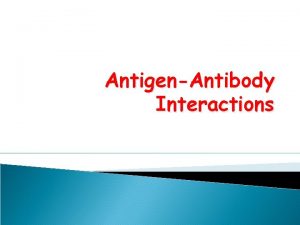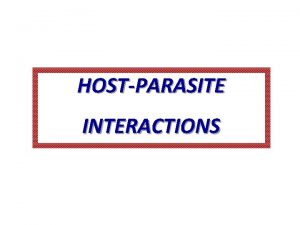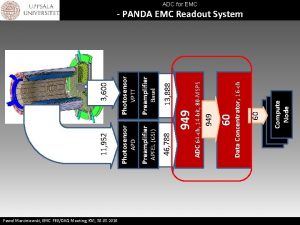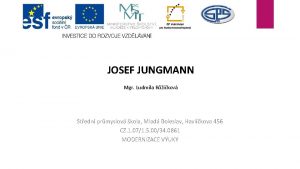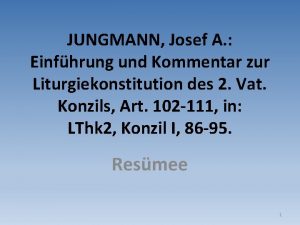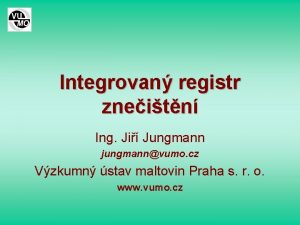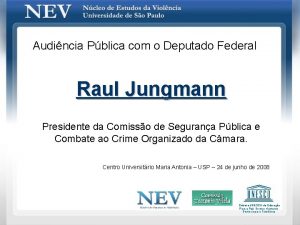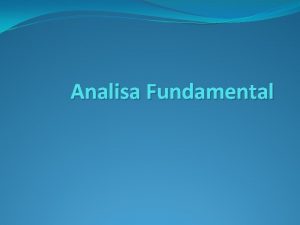KVI Groningen Fundamental Interactions Klaus Jungmann RECFA Meeting





























- Slides: 29

KVI – Groningen Fundamental Interactions Klaus Jungmann RECFA Meeting, Amsterdam, 23 September 2005 AGOR

KVI – Groningen Fundamental Interactions Klaus Jungmann RECFA Meeting, Amsterdam, 23 September 2005 AGOR 22 scientists ~20 students ~ 100 people total 8 MЄ annual running budget

KVI – Groningen Fundamental Interactions Klaus Jungmann RECFA Meeting, Amsterdam, 23 September 2005 AGOR • Science • Education: International Research School FANTOM (NL, F, B, D, S) study weeks e. g. on Neutrinos in Physics and Cosmology

KVI – Groningen Fundamental Interactions Up to recentlty: Continued Future: 2007 Funding - 2013 Klaus Jungmann RECFA Meeting, Amsterdam, 23 September 2005 Scientific. Programs AGOR • • • AGOR + irradiation RI I PP • • TTR Interacting Hadrons • • Astroparticle Physics KVI Partnership Program • Nuclear Structure Collaboration withand GSIits Implications for Physics • Accelerator Astrophysics • Atomic Physics • Nuclear Structure • Nuclear Geophysics Nuclear Astrophys. • PANDA AGOR

KVI – Groningen Fundamental Interactions Klaus Jungmann RECFA Meeting, Amsterdam, 23 September 2005 TRI P Trapped Radioactive Isotopes: icrolaboratories for fundamental Physivs AGOR Users Facility Scientific FOCUS on: Fundamental Symmetries and Interactions CP / T - violation b-decays EDM searches

TRI P Trapped Radioactive Isotopes: icrolaboratories for Fundamental Physics Theory Nuclear Physics Atomic Physics Experiment Nuclear Physics people (scientists): funding: G. Berg, U. Dammalapati, S. Dean, P. Dendooven, O. Dermois, M. N. Harakeh, R. Hoekstra, K. Jungmann, A. Mol, R. Morgenstern, C. J. G. Onderwater, A. Rogachevskiy, O. Scholten, M. Sohani, R. Timmermans, E. Traykov, L. Willmann, H. W. Wilschut project 2001 + many more colleagues providing support program 2013

Fundamental Interactions – Standard Model Gravitation Magnetism Electro Magnetism Maxwell Electricity Glashow, Salam, t'Hooft, Physics within the Standard Model Veltman, Weinberg ? Weak Electro - Weak Standard Model Strong not yet known? Grand Grant Unification Physics outside Standard Model Searches for New Physics

Some Questions related to TRI P Physics • Origin of Parity Violation in Weak Interactions • (nature prefers lefthandedness) details of b-decays Na, Ne, Ca isotopes • Dominance of Matter over Antimatter in Universe ? CP - Violation, Time Reversal Symmetry, Parity Violation permanent Electric Dipole Moments ? Ra isotopes Deuterons

TRI P Possibilities to Test New Models High Energies & Direct Observations Low Energies & Precision Measurement

TRI P New Interactions in Nuclear b-Decay In Standard Model: Weak Interaction is V-A In general b-decay could be also S , P, T Vector [Tensor] b[+ ] ne Scalar [Axial vector] [ ] b+ ne • R and D test both Time Reversal Violation • D most potential • R scalar and tensor (EDM, a) • technique D measurements yield a, A, b, B

TRI P New Interactions in Nuclear b-Decay In Standard Model: Weak Interaction is V-A 21 Na (Berkeley) Scielzo, Freedman, Fujikawa, Vetter PRL 93, 102501 -1 (2004) In general b-decay could be also S , P, T a exp = 0. 5243(91) a theor = 0. 558(6) 38 m. K } b-branching? (TRIUMF) A. Gorelov et al. PRL 94, 142501 (2005) a exp = 0. 9978(30)(37) a theor = 1

TRI P Radium Permanent Electric Dipole Moment 6 EDMs violate - Parity - Time Reversal -CP Symmetry Advantage over “best“ atom so far (199 Hg) - close states of opposite parity several 10 000 enhancement possible - some nuclei strongly deformed may give nuclear enhancement

Some EDM Experiments compared New 2004 from muon g-2: d (muon) < 2. 8 10 -19 molecules: 199 Hg 1. 6 10 -27 • • Radium potential Start TRI P de (SM) < 10 -37 after E. Hinds

TRI P Possible Sources of EDMs

Magnetic Separator Ion Catcher RFQ Cooler Atomic Physics Production Target Nuclear Physics AGOR cyclotron Particle Physics Magnetic separator Q Me. V D Q Q D ke. V Production target Q Q e. V me. V MOT Beyond the Standard Model Te. V Physics TRI P Facility Ion catcher (thermal ioniser or gas-cell) RFQ cooler/buncher ne. V MOT Low energy beam line MOT AGOR cyclotron

Degrader selection 21 Na 80 kcps / 25 pn. A 21 Ne Focal plane d. E detector: d. E-TOF L. Achouri et al.

TRI P laser lab Theory Atomic Nuclear Physics Experiment Nuclear Physics separator

TRI P Key Issues and Experiments • TRI P will be a user facility open to outside users (first users from France already in 2004!) • KVI will concentrate first on CP/ T violation – electroweak tests * b- decay (20, 21 Na, 19 Ne, 39 Ca) * electric dipole moments (Ra, d ) applications * ALCATRAZ (rare Ca isotope detection)

TRI P The ALCATRAZ Experiment a precursor for TRI P (R. Hoekstra, R. Morgenstern et al. ) Early Spin Off 10 -12 sensititivity reached working towards 10 -14 41 Ca

TRI P Key Issues and Experiments • TRI P will be a user facility open to outside users (first users from France already in 2004!) • KVI will concentrate first on CP/ T violation – electroweak tests * b- decay (20, 21 Na, 19 Ne, 39 Ca) * electric dipole moments (Ra, d ) applications * ALCATRAZ (rare Ca isotope detection) • OUTSIDE USERS branching ratio (France) * 19 Ne lifetime (USA) * d-EDM ring experiment (USA, Russia, Italy, Germany …) * 12 N, 12 B b-decays into 3 a (Scandinavia) * single ion parity experiments (USA) … * 21 Na completed on its way LOI discussed

TRI P AGOR is Indispensable for TRI P at KVI Ø Precison experiments require time to develop: AGOR & KVI ideal ( compare ISOLDE @ CERN or AD @ CERN ) Ø Various upgrades and adaptations • New Beams • e. g. 208 Pb • new sources (metals) • improved transmission • …. . • High Power ( 100 W… 1 k. W) • new extraction • beam stops • beam monitoring • …. . S. Brandenburg &Co

muon g-2 Spin precession in (electro-) magnetic field (g-2) : Result after a long series of precision measurements and theory effort charged particle EDM Spin precession in (electro-) magnetic field including KLOEMeasurement a - 11 659 000 ∙ 10 -10 (g-2) a challenge for theory

muon g-2 Spin precession in (electro-) magnetic field d charged particle EDM Spin precession in (electro-) magnetic field d d

Searches for EDMs in charged particles: Novel Method invented Motional Electric Fields exploited International Collaboration (USA, Russia, Japan, Italy, Germany, NL, …) R 0 1. . 2 m • 3 possible sites discussed: BNL, KVI, Frascati • Limit d. D <10 -27 … 10 -29 e cm • Can be >10 times more sensitive than neutron dn G. Onderwater et al.

TRI P Goals of TRI P @KVI • Study fundamental interactions using stored (radioactive) isotopes • A facility is created for KVI scientists and outside users (the first groups are already active, proposals P 01, P 02, P 03, P 04 ) General Time Lines • Project started 2001; setup facility until end 2005 • Exploitation of facility until 2013 (also in new FOM strategic plan from 2004) • TRI P became a managed program in July 2001 Facility Setup is more or less on Schedule

• Opportunities for low energy Fundamental Symmetries and Interaction research • TRI P Facility ready for first users

Thank YOU !

The World according to Escher P C matter mirror image anti-particle e+ particle e- T anti-matter time from H. W. Wilschut

Generic EDM Experiment Preparation of “pure“ J state Polarization Interaction with E - field Analysis of state cs – i s y h p l ins al a t n ves l o e c s m Spin e h yt b. Rotation s e u l a v ul f p l e “e cm” h y not ver Electric Dipole Moment: Spin precession : Determination x = eħ /2 m of Ensemble x Spin average d = x c-1 J e d J h J Example: d=10 -24 e cm, E=100 k. V/cm, J=1/2 e 15. 2 m. Hz
 Josef jungmann prezentace
Josef jungmann prezentace Price adjustment in retail management
Price adjustment in retail management Kvi kpi
Kvi kpi Hotte halton
Hotte halton Kvi cart
Kvi cart Product architecture
Product architecture Fundamental particles and interactions
Fundamental particles and interactions Modular vs integral product architecture example
Modular vs integral product architecture example Recfa
Recfa M&o vub
M&o vub Recfa
Recfa Recfa
Recfa Hematologie groningen
Hematologie groningen Werkboek stretch groningen
Werkboek stretch groningen Edzes groningen
Edzes groningen Academisch huisartsenpraktijk groningen
Academisch huisartsenpraktijk groningen Margreet online?start=70
Margreet online?start=70 Rabobank noord groningen
Rabobank noord groningen Topomania groningen
Topomania groningen Cmzorg
Cmzorg Groningen declaration
Groningen declaration Meeting objective
Meeting objective What is meeting and types of meeting
What is meeting and types of meeting Types of meeting
Types of meeting For todays meeting
For todays meeting Klaus ropin
Klaus ropin Klaus riedel
Klaus riedel Klaus kummer
Klaus kummer Klaus kuhl
Klaus kuhl Klaus feldmann familie
Klaus feldmann familie
